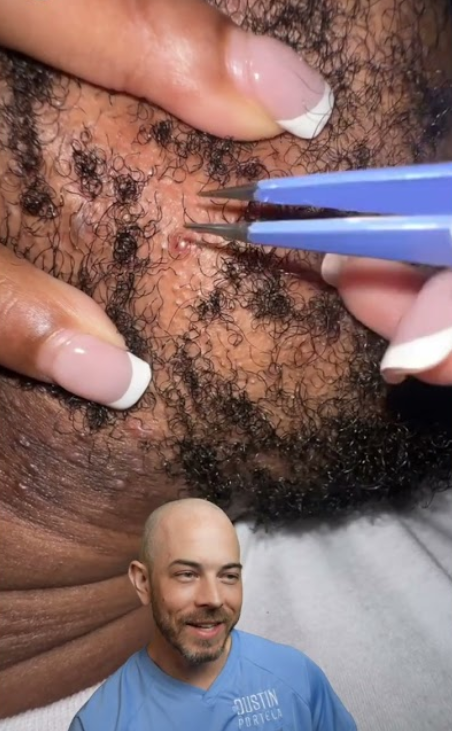Understanding and Managing Ingrown Beard Hairs
Ingrown beard hairs are a common issue for many men, especially those with coarse, curly hair. These pesky hairs occur when a shaved or trimmed beard hair grows back into the skin instead of growing outward, resulting in irritation, redness, and sometimes painful bumps. The problem can affect anyone, but it is more prevalent in men with curly or thick facial hair, as these types of hairs have a higher likelihood of curling back into the skin after shaving.
Causes of Ingrown Beard Hairs
Ingrown beard hairs occur primarily because of the way hair grows. When hair is cut too short or shaved against the grain, it can sometimes curl back under the skin. This is particularly problematic for individuals with curly or coarse facial hair. Once the hair curls beneath the skin’s surface, the body sees it as a foreign object and tries to fight it off, causing irritation, inflammation, and sometimes infection.
Ingrown hairs can also result from shaving techniques that are too harsh, like shaving with a dull razor, pressing too hard while shaving, or shaving too frequently. These techniques can damage the hair follicles, leading to more ingrown hairs. Additionally, if the skin is not properly exfoliated, dead skin cells can clog hair follicles, increasing the chances of hairs being trapped beneath the surface.
Symptoms of Ingrown Beard Hairs
The symptoms of ingrown hairs are usually easy to identify. The most common signs include:
- Red, Inflamed Bumps: These appear on the skin where the hair is growing inward.
- Pain: The area may feel tender or sore to the touch.
- Pus: If the ingrown hair becomes infected, it might fill with pus, which can cause the bump to turn yellow or white.
- Dark Spots: In some cases, ingrown hairs can cause hyperpigmentation, leaving dark spots or scars on the skin.
In some severe cases, the ingrown hair may form an abscess, which can cause more significant pain and require medical treatment. If left untreated, repeated ingrown hairs can lead to scarring or keloid formation.
Preventing Ingrown Beard Hairs
The best way to avoid ingrown hairs is to change certain shaving and grooming habits. Here are some tips:
- Shave with the Grain: Shaving in the direction of hair growth can reduce the risk of hair being cut too short or growing back into the skin.
- Use a Sharp Razor: A dull razor can tug at the hair and cause it to break, which increases the likelihood of it becoming ingrown. Always use a sharp blade and replace it regularly.
- Exfoliate Regularly: Exfoliating your skin before and after shaving removes dead skin cells and helps hair grow out properly.
- Avoid Tight Clothing: Tight collars or scarves can rub against the skin and push the beard hair back into the skin, leading to ingrown hairs.
- Moisturize: Keep the skin hydrated to prevent it from becoming dry and flaky. Dry skin can make it more difficult for the hair to grow properly.
Treating Ingrown Beard Hairs
If ingrown hairs do occur, there are several ways to treat them:
- Warm Compress: Applying a warm compress to the affected area can help reduce inflammation and allow the hair to break free from the skin.
- Topical Treatments: Over-the-counter creams with ingredients like salicylic acid, glycolic acid, or benzoyl peroxide can help reduce inflammation and prevent infection.
- Gentle Tweezing: If the hair is visible just beneath the surface, you may use sanitized tweezers to gently pull it out. However, this should be done with care to avoid scarring or further irritation.
- Seek Professional Help: If ingrown hairs become infected or cause persistent problems, a dermatologist can provide professional treatment options, such as a mild cortisone injection or laser hair removal.
Conclusion
Ingrown beard hairs can be a frustrating issue, but with the right grooming techniques and treatment methods, they can be managed and prevented. Regularly exfoliating, shaving correctly, and maintaining good skin care practices can significantly reduce the likelihood of developing ingrown hairs. For those dealing with more severe cases, professional treatments are available, ensuring that men can maintain smooth, healthy skin while still enjoying their facial hair.
